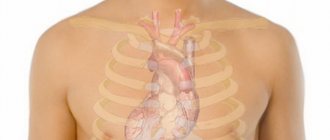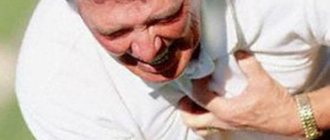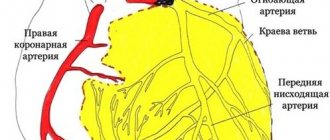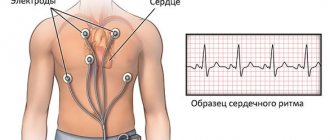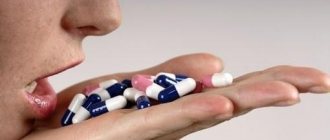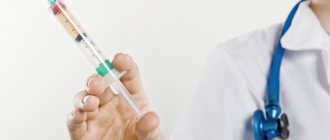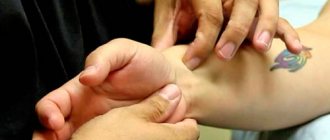A heart attack is extremely dangerous. After all, cardiological pathology often manifests itself gradually, and it often happens that it is disguised as others. For example, one of the symptoms is pain that can radiate to the arm, and in some cases to the shoulder. A heart attack can also manifest itself as causeless coughing, sweating, and even fear of death. At the same time, it is extremely important to recognize the disease in time in order to quickly provide first aid and have time to call an ambulance. After all, when a heart attack develops or serious changes in the functioning of the heart muscle, time plays an important role - the faster help is provided, the greater the chances of recovery. AiF.ru spoke about how to distinguish a heart attack from other diseases and how quickly you need to act Doctor of Medicine, Professor, expert of the National Health League Mehman Mamedov.
Causes and course of the attack
A heart attack is essentially a violation of the blood circulation of the myocardium, when necrosis of the muscle tissue of the heart can subsequently develop. The attack can be lightning fast - in this case, serious complications appear that require immediate resuscitation measures. Depending on the degree of narrowing of the coronary arteries, the attack may last longer.
As a rule, most often a heart attack develops due to problems with the cardiovascular system. First of all, this is atherosclerotic damage to the arteries. Age is an important factor; in the elderly, the risks of developing pathology increase significantly, as functional changes in the functioning of the heart and blood vessels affect. Although recently there has been a rejuvenation of cardiac incidents. An attack lasting more than 30 minutes can be considered a manifestation of myocardial infarction.
Before and after the disaster. What to do if you have a heart attack Read more
A heart attack can develop against the background of angina pectoris. This is one of the forms of coronary disease, in which paroxysmal pain appears in the heart area. They develop against the background of insufficient blood supply to the myocardium. Angina is provoked by a number of reasons: physical and emotional overload, bad habits (especially smoking, alcohol).
In addition, factors such as diabetes and long-term use of a number of drugs, including non-steroidal ones, can trigger a heart attack.
Stages of treatment and rehabilitation
| Period | Treatment methods | Features of care |
| Rehabilitation (up to 28 days) | The patient is transferred to the infarction department and then to a cardiology sanatorium. The patient is prescribed medications that normalize blood circulation and strengthen the heart muscle. | The nurse teaches the ward how to sit down and stand up correctly and helps restore self-care skills. |
| Rehabilitation (up to 28 days) | The patient is transferred to the infarction department and then to a cardiology sanatorium. The patient is prescribed medications that normalize blood circulation and strengthen the heart muscle. | The nurse teaches the ward how to sit down and stand up correctly and helps restore self-care skills. |
| Outpatient (up to 1 year) | The patient is seen by a doctor in a clinic or boarding house, takes medications to prevent a heart attack, and does physical therapy. | The caregiver’s task is to help the recovering person adjust his diet and daily routine to avoid a relapse. |
Rehabilitation of patients who have suffered an acute myocardial infarction affects all aspects of the patient's life. In addition to medication and physiotherapeutic treatment, it includes moderate physical activity and work with emotions.
Specifics of care in the acute period
This is the most important step in the treatment of myocardial infarction. Any physical activity, anxiety, or skipping medications can lead to irreversible consequences. Since the patient after a myocardial infarction must strictly adhere to bed rest, he finds himself completely helpless and needs round-the-clock care.
The nurse should:
- feed him and give him medicine on time,
- periodically measure blood pressure and pulse,
- maintain body hygiene,
- change underwear and bed linen,
- turn over several times a day to prevent bedsores and thrombosis,
- provide psychological support.
A patient with myocardial infarction is prescribed diet No. 10. It does not contain products that cause gas and limits salt intake. The patient receives food in small portions 5-6 times a day. The last dose should be at least 3 hours before bedtime.
To prevent diaper rash from occurring on the skin, the patient should be dressed in light but warm clothing that allows air to pass through and removes moisture from the body.
In the acute period, many patients are characterized by a strong fear of death, a hypochondriacal or hysterical reaction, which negatively affects health and prevents the body from recovering. If these conditions are not corrected in a timely manner, changes in the psyche can become entrenched in character. The nurse helps the patient cope with the fear of death, focuses his attention on improvements and positive prognoses, monitors the adequacy of reactions and immediately informs the doctor if the patient shows signs of psychosis.
Rehabilitation conditions for patients who have suffered a myocardial infarction
Bed rest in the acute period is due to the need to reduce the load on the heart muscle and reduce its need for oxygen. However, prolonged refusal to move increases the risk of congestion in the lungs and the formation of blood clots, impairs the functioning of the digestive system, and causes muscle weakness. To avoid this, the patient is given moderate physical activity as he recovers.
If the acute period passes without complications, the patient is allowed to sit down, stand up, and go to the toilet independently. The nurse helps perform movements smoothly, without sudden effort, and makes sure that the patient does not become ill. It measures your heart rate before and after physical activity. After about 2 weeks, short walks around the hospital grounds are allowed.
The transition from one activity level to the next is permitted after an intermediate diagnosis. The patient's blood pressure is measured, a cardiogram is taken, and individual exercise tolerance is checked. Light exercise should be done in bed before getting up to prepare the cardiovascular system after sleep for daytime activity.
After discharge from the hospital, the patient is recommended to undergo rehabilitation in a sanatorium or boarding house. Here a therapeutic diet is prepared for him, rich in potassium and maintaining a balance of proteins, fats, and carbohydrates. Benefits for the patient:
- lean meat,
- fish,
- fresh vegetables and fruits,
- whole grain cereals,
- eggs,
- greenery,
- cottage cheese,
- potato.
Upon admission to the rehabilitation department, the patient takes exercise tests. The results show the functioning of the cardiovascular and respiratory systems. Based on them, a system of exercises is developed in a gentle or training mode. The patient is recommended to engage in physical therapy 3-4 times a day with a gradual increase in load. The exercise therapy complex may include:
- general strengthening workout,
- balance exercises,
- exercises with ball and stick,
- walking at a calm and fast pace,
- swimming,
- exercise classes,
- breathing exercises.
The duration of classes is 10-25 minutes. At the rehabilitation stage, patients who have suffered a myocardial infarction no longer require physical care, but still need psychological support. Many of them do not adequately assess their capabilities and either avoid the required load or increase it excessively. The nurse’s task during this period is to monitor compliance with the recommended schedule of activities and rest, work with the negative emotions of the ward and help him adapt to normal life.
Acute phase
An acute heart attack is characterized by symptoms such as severe weakness, dizziness, and acute pain in the chest. In this case, it can radiate to the shoulder blade, neck or jaw. The pain does not go away after taking the pills. Indirect evidence of the development of cardiac pathology in such a situation can be cold sweat, shortness of breath and weakness.
The effect of surprise. Who is at risk for sudden cardiac death syndrome Read more
Providing first aid for myocardial infarction
When symptoms of a heart attack appear, the patient should be placed in a reclining position with knees bent or seated on a chair with a backrest. You should also loosen buttons, loosen ties, and loosen tight clothing. After this, you need to call an ambulance. Nitroglycerin can only be given if you have high blood pressure. If the patient has hypotension, then the drug should not be used. Taking nitroglycerin in the presence of low blood pressure can lead to the development of collapse. If the patient is not allergic to aspirin, then you need to give him 300 mg of this medicine.
The tablet must be chewed and washed down with water. In this case, it will act quickly. In case of cardiac arrest, loss of consciousness and agonal breathing, cardiopulmonary resuscitation should be started immediately.
Development in advance
Sometimes a heart attack can take an extremely long time to develop—about a month. In this case, the approaching threat may manifest itself as the following harbingers.
A person suffers from fatigue and constant drowsiness. Vessels that are constantly under stress are in a state of tone, that is, they are predominantly narrowed. This means that the body lacks oxygen and nutrition. The nervous system especially reacts to such a shortage. As a result, symptoms such as drowsiness, melancholy and fatigue begin to develop, for which at first glance there is no reason.
Another sign is shortness of breath. If one organ malfunctions, in this case the heart, problems begin in the functioning of the lungs, the gas exchange process is disrupted, and breathing becomes intermittent.
A few days before the attack, many people experience a feeling of internal coldness and begin to shiver. Often even such a condition is confused with ARVI, but if the condition is caused by problems with the heart, the body temperature will be normal. It is also worth remembering cases of hereditary history, and if problems with the heart and blood vessels were observed in relatives, it is worth visiting a doctor even for the purpose of prevention.
The many faces of anxiety. How a panic attack differs from a heart attack Read more
Coughing up blood: causes of illness in adults
In some cases, when the cough is strong, dry and hysterical, a small amount of scarlet blood in the sputum may be the result of damage to small superficial vessels in the bronchi, pharynx or trachea. This phenomenon is not dangerous if it is not accompanied by other alarming signs. However, if the cough does not subside, the symptoms increase, the volume of blood is significant, or the streaks do not disappear, this may be a sign of serious problems and illnessesSource: EarwoodJS, ThompsonTD. Hemoptysis: evaluation and management // Am Fam Physician. 2015 Feb 15;91(4):243-9..
Hidden symptoms
There are also atypical symptoms, which many do not pay attention to, wasting time. For example, chest pain is not the only variant of an attack caused by a malfunction of the heart muscle. There is a variant of the so-called abdominal form. It occurs predominantly in women. The pain in this case is determined throughout the abdomen or collects under the ribs on the right side. At the same time, heartburn, nausea, vomiting, which does not bring relief, and flatulence appear. Doctors even compare the clinical picture to an “acute abdomen.”
Another atypical option is the asthmatic form. There may be no pain at all. The main symptoms include a cough with pinkish frothy sputum, suffocation, and shortness of breath. The patient has to breathe frequently, and this is difficult for him. It is difficult for him to lie horizontally; it is most comfortable to be in a semi-sitting position.
The arrhythmic form of a heart attack also manifests itself predominantly without pain or against the background of minor pain. The main symptom is tachycardia.
The disease of the dissatisfied. What symptoms indicate the onset of heart problems Read more
When to ask for help
Naturally, in the acute phase you need to seek help immediately. In other situations, if some atypical health problems begin that are embarrassing, you should not try to treat yourself. It is necessary to consult a doctor - a therapist or cardiologist. Moreover, you should not practice folk remedies - you can simply waste time. Those who have people in their family suffering from heart disease should be especially attentive to themselves. After all, hereditary risks in the development of cardiovascular pathologies are quite high.

